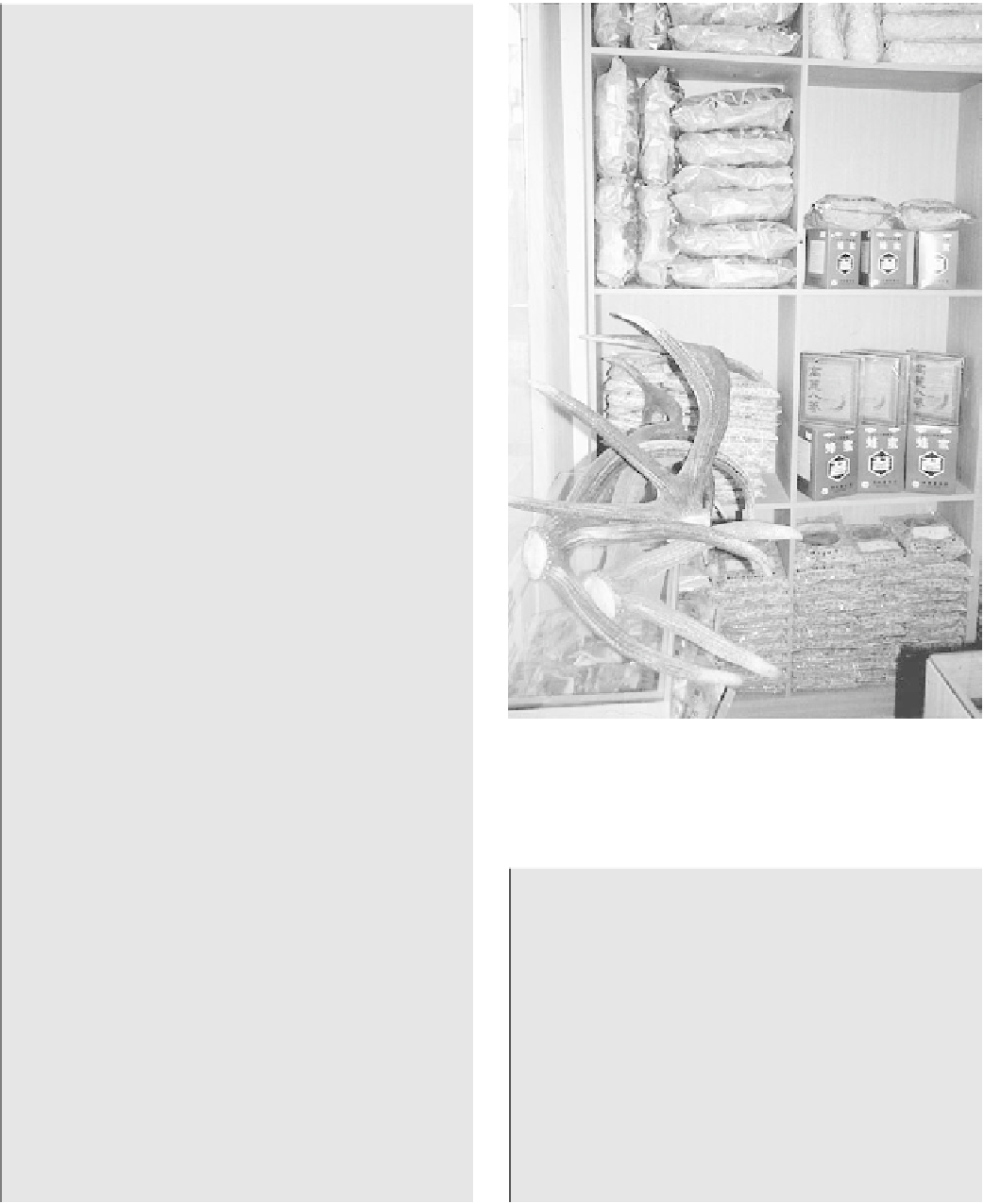Geography Reference
In-Depth Information
Do the medicines you use derive from tropical plants
or animals?
Plants, Animals, and Medicine
The United States imports more than $20 million
worth of rain forest plants a year. In fact, 40 per-
cent of medications sold in North America derive
from plants. These are either harvested from
forests by local people or are commercially grown.
Cinchona trees, originally from South America,
are grown in India to produce the anti-malarial
drug quinine. Malaria is carried by mosquitos in
tropical and subtropical regions. But new, quinine-
resistant mosquitos have evolved, prompting
researchers to investigate anti-malarial potential
of new plants.
Both modern and traditional medicines impact
biotic communities. In India, for example, 2,500
plants are either used by traditional healers or ex-
ported. Nepal exports 90 percent of its 700 medici-
nal plants and herbs. These countries, along with
Sri Lanka, are noted for traditional
Ayurvedic
med-
ical practice. Grounded in Hinduism, Ayurvedic
healing relies on natural products.
T Traditional medicine from India, China, and
elsewhere entails an enormous
pharmacopia
, some
of which has proved invaluable to modern, medical
practitioners (Figure 2-21). For example, reserpine,
the source of modern tranquilizers, is extracted
from the serpentine root shrub. The National
Cancer Institute and other organizations, intent on
finding cures for cancer and HIV -related diseases,
are actively collecting tropical leaves, twigs, roots,
and rhizomes from both forests and traditional
healers. Thousands of samples have been collected,
yet these account for only seven to eight percent of
the thousands of flowering plants in Asia. Many of
these are vanishing in the wake of development.
Also useful in medicine are animal products.
Snake venom derivatives can relieve phlebitis. They
also can duplicate symptoms of muscular dystrophy
and myasthenia gravis, enabling scientists to under-
stand these diseases better.
Animal products are widely used in traditional
practice, but Western scientists put little faith in the
curative powers of most of them. A more important
Figure 2-21
This is a traditional medicine pharmacy in South Korea, where
animal and plant products are essential. Here you can see deer
antlers and packages of ginseng roots.
Photograph courtesy of
B. A. Weightman.
point is that the majority of Asian people believe in
their efficacy . And, through experiments with
placebos, scientists have shown that belief in a
medicine' s effectiveness can bring about actual
improvement.
Faith in the mysterious workings of faunal
cures drives the demand for animal parts. In China,
powdered deer antlers are employed to counter aging,
and ground, dried gecko is taken for respiratory
problems. In Vietnam, boiled monkey bones are be-
lieved to improve circulation. Indonesia' s trade in
jammu
or traditional medicinals involves millions
of dollars a year. While many , better-educated



















Search WWH ::

Custom Search